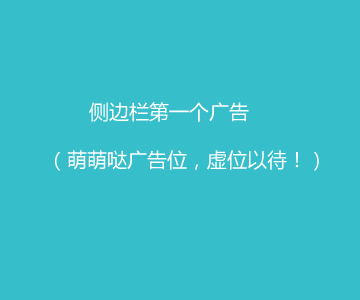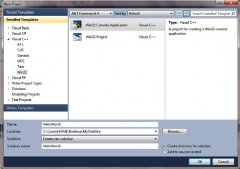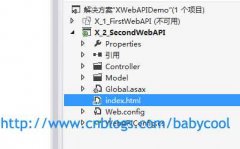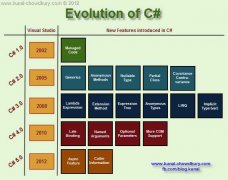Windows 10 开发日记(五)
前文再续,上一章提出了问题,本章提出了三种解决方案:
解决方案一:手动进行异步转换,核心思想:将binding做的事情放入CodeBehind
FilterItemControl.XAML:
<Grid> <Image x:Name="FilterImage" Stretch="UniformToFill"/> <Grid VerticalAlignment="Bottom"> <TextBlock x:Name="FilterName" TextWrapping="Wrap" HorizontalAlignment="Center" VerticalAlignment="Center" Foreground="White"/> </Grid> <Border x:Name="border" BorderBrush="White" BorderThickness="1" d:LayoutOverrides="LeftPosition, RightPosition, TopPosition, BottomPosition" Margin="1" Visibility="Collapsed"/> </Grid>
FilterItemControl.cs
/// <summary> /// 设置数据源 /// </summary> /// <param></param> public async void SetSource(Filter filter) { if (filter != null) { _filter = filter; // 使用WriteableBitmap有一个不好的点:必须要知道图片的大小 WriteableBitmap result = new WriteableBitmap(768, 1280); var wbData = await MyFilterSDK.ProcessFilterAsync(filter); if(wbData != null) { using (var bmpStream = result.PixelBuffer.AsStream()) { bmpStream.Seek(0, SeekOrigin.Begin); bmpStream.Write(wbData, 0, (int)bmpStream.Length); } FilterImage.Source = result; } FilterName.Text = filter.FilterName; } }
为其设置数据源, FilterItemsControl.cs
/// <summary>
/// 数据源发生变化
/// </summary>
/// <param>滤镜列表</param>
private void OnItemsSourceChanged(List<Filter> filters)
{
if(filters != null)
{
Container.Children.Clear();
foreach(var filter in filters)
{
FilterItemControl itemcontrol = new FilterItemControl();
itemcontrol.Width = ITEMWIDTH;
itemcontrol.Height = ITEMHEIGHT;
// 将binding中做的事情放到代码中!
itemcontrol.SetSource(filter);
itemcontrol.ItemSelected += Itemcontrol_ItemSelected;
itemcontrol.ItemDoubleClicked += Itemcontrol_ItemDoubleClicked;
Container.Children.Add(itemcontrol);
}
}
}
优点:方便简单
缺点:XAML必须写死,没有扩展性,如果同样的数据变换一种显示方式,需要重写一个控件。
解决方案二:使用异步属性,核心思想,使用Binding和异步加载
FilterItemControl.xaml
<Grid> <Image x:Name="FilterImage" Stretch="UniformToFill" Source="{Binding WBAsyncProperty.AsyncValue, Converter={StaticResource imagConverter}}"/> <Grid VerticalAlignment="Bottom"> <TextBlock x:Name="FilterName" TextWrapping="Wrap" Text="{Binding FilterName}" HorizontalAlignment="Center" VerticalAlignment="Center" Foreground="White"/> </Grid> <Border x:Name="border" BorderBrush="White" BorderThickness="1" d:LayoutOverrides="LeftPosition, RightPosition, TopPosition, BottomPosition" Margin="1" Visibility="Collapsed"/> </Grid>
FilterItemControl.cs不需要额外的东西,但是Model层的数据源需要增加一个异步属性用于被View层绑定
Filter.cs
private AsyncProperty<byte[]> _wbAsyncProperty; // 异步属性
public AsyncProperty<byte[]> WBAsyncProperty
{
get
{
return _wbAsyncProperty;
}
set
{
SetProperty(ref _wbAsyncProperty, value);
}
}
// 初始化
public Filter()
{
WBAsyncProperty = new AsyncProperty<byte[]>(async () =>
{
var result = await MyFilterSDK.ProcessFilterAsync(this);
return result;
});
}
由于返回值是byte[]类型,所以我们在binding时,必须要进行一次转换,将其转换为WriteableBitmap:BytesToImageConverter.cs
public class BytesToImageConverter : IValueConverter { public object Convert(object value, Type targetType, object parameter, string language) { // 使用WriteableBitmap有一个不好的点:必须要知道图片的大小 WriteableBitmap result = new WriteableBitmap(768, 1280); var filterData = value as byte[]; if (filterData != null) { #region WriteableBitmap方案 using (var bmpStream = result.PixelBuffer.AsStream()) { bmpStream.Seek(0, SeekOrigin.Begin); bmpStream.Write(filterData, 0, (int)bmpStream.Length); return result; } #endregion } else return null; } public object ConvertBack(object value, Type targetType, object parameter, string language) { throw new NotImplementedException(); } }
关于如何实现AsyncProperty和其工作原理在这里不做深究,在这里总结一下这个方案的优缺点:
优点:使用Binding,UI上不会卡顿,图片获取完之后会显示在UI上
缺点: 1. 控件重用性不高
2. SDK必须与UI无关,这也是为什么返回byte[],而不是直接返回WrieableBitmap的原因,与AsyncProperty的实现技术有关
3. 因为原因2,必须实现转换器
解决方案三:使用DataTemplate,核心思想:将DataTemplate转换放到CodeBehind
FilterItemControl.XAML需要改变,这里只需要一个ContentPresenter接收内容
温馨提示: 本文由Jm博客推荐,转载请保留链接: https://www.jmwww.net/file/71361.html




